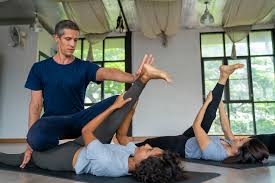In the world of athletic performance, the pursuit of strength, speed, and endurance often overshadows the importance of flexibility. However, elite athletes across various sports have started to incorporate yoga into their training routines, recognizing its unique ability to improve flexibility, enhance performance, and even reduce the risk of injury.
Yoga, with its emphasis on body awareness, breathing techniques, and mindfulness, is proving to be more than just a stretching routine. Here’s how yoga plays a special role in improving flexibility and performance.
1. Enhancing Flexibility Through Targeted Stretches
Yoga is widely regarded for its ability to enhance flexibility, especially in areas that many athletes neglect, such as the hips, hamstrings, and shoulders. The postures (asanas) practiced in yoga are designed to lengthen and stretch muscles, increasing their elasticity over time. This is particularly beneficial for athletes who rely on joint mobility and muscle suppleness to perform at their best.
By performing yoga regularly, athletes can improve the range of motion in their joints and stretch out tight muscles, which can contribute to better overall movement. Increased flexibility not only aids in the execution of more dynamic movements but also helps athletes achieve proper form during their sport, whether that’s in running, swimming, or weightlifting.
2. Building Core Strength and Stability
While yoga is often associated with flexibility, it also plays a crucial role in building core strength and stability. Many yoga poses require athletes to engage their core muscles, which are essential for maintaining proper posture, balance, and control during both training and competition. A strong core allows athletes to execute movements with greater precision and efficiency, which translates into improved performance in their respective sports.
For instance, poses such as plank, boat, and warrior require significant engagement of the abdominal and lower back muscles. As athletes strengthen their core through yoga, they also enhance their overall athletic performance, whether it’s running faster, jumping higher, or lifting heavier weights.
3. Injury Prevention and Recovery
Injuries are an unfortunate but inevitable part of sports. However, regular yoga practice can help reduce the likelihood of injury by improving muscle flexibility and joint mobility. Stretching through yoga helps to keep muscles supple and prevent them from becoming too tight, which is a common cause of strains and sprains. By enhancing the flexibility of the muscles and connective tissues, yoga helps athletes maintain a healthy range of motion, reducing the risk of overuse injuries.
Moreover, yoga serves as a great recovery tool after intense workouts or competitions. Restorative yoga poses can promote blood circulation, reduce muscle tension, and accelerate the healing process. The deep breathing techniques employed during yoga practice also help activate the parasympathetic nervous system, encouraging relaxation and quicker recovery times.
4. Improving Mental Focus and Mind-Body Connection
Yoga isn’t just about physical flexibility; it’s also about developing a strong mind-body connection. The mindfulness techniques used in yoga help athletes cultivate focus and concentration, which are critical components of athletic performance. Many yoga practices emphasize deep breathing (pranayama) and mental clarity, which can help athletes stay calm and centered under pressure.
The ability to stay mentally focused is just as important as physical prowess, especially during high-stakes moments in competition. Yoga trains athletes to be present in the moment, which can translate to better decision-making, reduced anxiety, and enhanced focus during high-pressure situations.
5. Stress Reduction and Mental Well-Being
In addition to its physical benefits, yoga is also known for its positive impact on mental health. The practice encourages relaxation and helps reduce stress levels, which can be particularly beneficial for athletes who experience performance anxiety or mental fatigue. Yoga’s emphasis on slow, controlled breathing allows athletes to regulate their nervous system, promoting a sense of calm and balance both during and outside of training.
By incorporating yoga into their routines, athletes can improve not only their physical flexibility but also their mental flexibility helping them to stay adaptable, resilient, and focused on their goals.
A Holistic Approach to Athletic Performance
Yoga is a powerful tool for athletes seeking to enhance their flexibility, strength, and overall performance. By integrating yoga into their training regimens, athletes can unlock a range of benefits, from improved joint mobility and muscle flexibility to increased mental clarity and injury prevention. As more athletes embrace yoga as part of their training, it’s becoming clear that flexibility isn’t just about bending and stretching it’s about fostering a deeper connection between mind and body, leading to improved performance both on and off the field.

